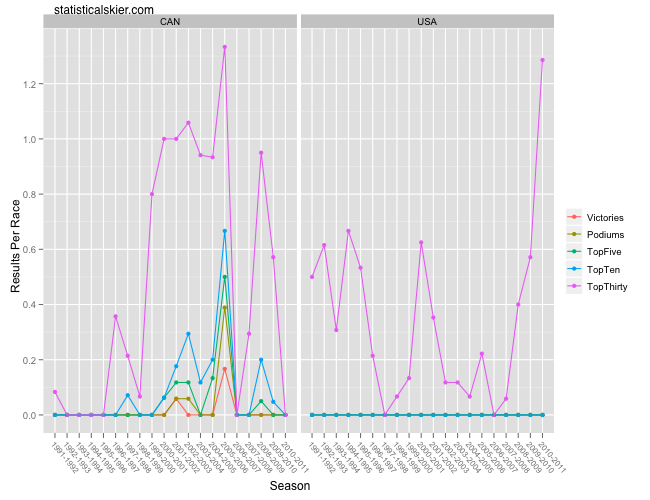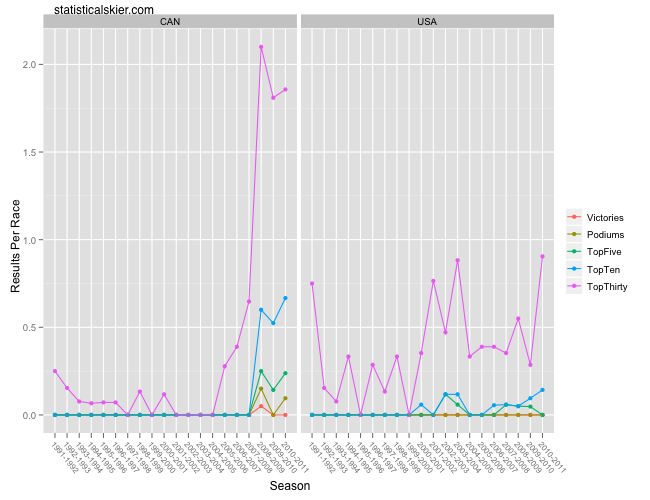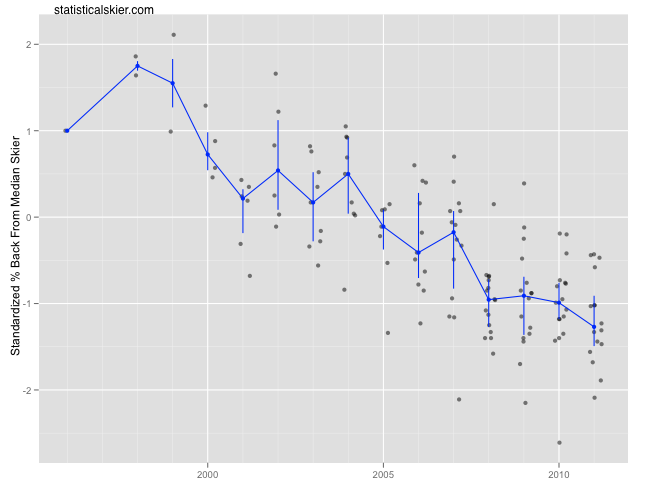Last time we tackled the question of ‘home snow advantage’, but only for distance events. The methodology I’m going to follow for sprinting is nearly the same, though obviously we can’t use the same performance measure. I’m not going to repeat myself much, so go back and read Monday’s post if you think you need a refresher.
Instead of basing our measurement of performance on standardized percent back from the median skier, we’ll simply use rank, i.e. finishing place. This is crude, but there aren’t a lot of good options with sprinting. One nice thing about this, though, is that the results will be more easily interpretable, since the estimated (dis)advantage will be as a change in rank.
One other thing is different here. Unlike my percent back based measure, rank has a hard lower bound. You can’t place any better than 1st. This suggests that we should transform our measure into a proportional change in rank, or something like that. The hope would be that this would allow us to more easily detect a ‘home snow advantage’ in a skier who is already generally quite fast.
I tried this and the results were….disappointing. Whenever I fit a fairly complicated model like this, I make sure to go back and check that the results make some amount of sense. In this case, when compared to the skier’s actual race results, the model performed very poorly and gave rather nonsensical results. The skiers and nations it identified as having relatively large discrepancies between there home and away sprinting simply did not match up with their actual results. One option would be to do the proportional change in rank adjustment on the estimates themselves, after fitting the model. This is tricky, though, if you want to avoid assuming athlete’s performance levels are constant over their careers. I’ll let you know if I come up with a solution…
On the other hand, not using a proportional change in rank worked quite well. This is fine, as long as we keep in mind that what we’re modeling isn’t exactly what we’d like to, but it’s close. Having done my due diligence of checking this model, it is doing a decent job of picking out skiers and nations with genuine discrepancies between their home and away sprinting, but it will likely be biased. Specifically, a skier who tends to ski 2 places better at home than away will be treated the same whether that movement was from 20th to 18th or 4th to 2nd. So we’re more likely to identify skiers who aren’t always in the top 6 or so.
With that warning, here are the five skiers with the biggest home vs away splits in each direction: Continue reading ›
Tagged Analysis, home snow advantage


